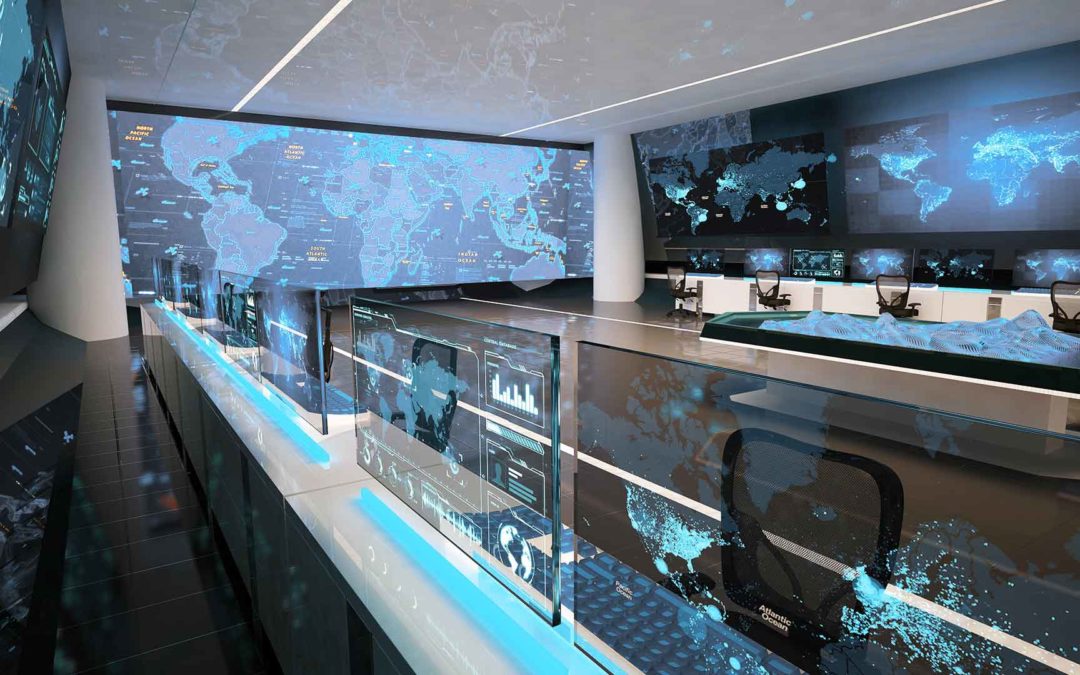How global visibility platforms are helping companies overcome the steep challenges of the global pandemic and develop more resilient, future-proof supply chains. Deal with the crisis of the day and better prepare for the future.
The phrase “supply chain control tower” gets tossed around a lot in supply chain, logistics, and transportation circles, where monitoring activity via a centralized hub is something that the industry has been working towards for years.
Thanks to advancements in technology, new connectivity points, and the creative genius of some enterprising IT vendors, the supply chain control tower took shape and is being put to use across all industries.
Don’t Fly Blind
The premise behind the control tower is straightforward. By unifying data from all points throughout the supply chain, and then translating that data into actionable information, companies can operate just like an airport control tower would as it orchestrates takeoffs, landings, and maneuverings of aircraft in the air and on the ground.
In supply chain speak, control towers serve as hubs for visibility, decision-making, and action, and all based on real-time analytics. According to McKinsey, about 39% of companies have implemented a control tower or “nerve center” for their supply chain activities. This number continues to grow every year, but these numbers show that more than half of companies are quite literally “flying blind” in today’s volatile business environment.
The global pandemic accelerated the need for reliable supply chain control towers and other advanced technology platforms. “As businesses adjust to the next normal, executives are grappling with the longer-term question: How will manufacturing and its supply chains look after COVID-19?,” McKinsey & Co., points out. “Most important, they are likely to be much more digital, as is already evident in the immediate response to the crisis.”
People, Process, Data & Organization
In What supply chain managers should know about control towers, Gartner says control towers comprise five different elements: people, process, data, and organization all supported by a set of technology-enabled capabilities for transparency and coordination. These towers leverage data to create insights and help users to make smarter decisions through these core functionalities:
- Sense: Get real-time, end-to-end supply chain visibility.
- Analyze: Understand and leverage incoming signals.
- Predict: Utilize advanced analytics for predictions and prescriptions.
- Solve: Use exception management and scenario modeling.
- Execute: Leverage a collaborative intelligent response framework.
- Learn: Continuously learn, sense, and respond.
Once in place, supply chain control towers help companies gain these and other key benefits, according to Deloitte.
- Increased revenue and accelerated speed to market.
- Better margins and increased cost control.
- Improved asset utilization, including inventory.
- Reduced lead times, optimized planning, and faster recovery from disruption.
- Enhanced risk mitigation, increased responsiveness, and improved process controls.
These and other benefits present a compelling argument in favor of supply chain control towers. “As supply chains becomes longer, more global, and increasingly complex, supply chain management professionals need a bird’s eye view of their networks,” Richard E.Crandall, Ph.D., writes in ASCM Insights, “to ensure that all of the parts are moving together and performing as expected.”
Future-Proof Supply Chains
According to Crandall, supply chain control towers “offer better visibility and command over transportation and logistics operations.” With more companies converting to omnichannel business models, he says control towers could help them maintain accurate records of the location, quantity, and availability of product inventory.
“This data could help supply chain managers determine the best place to stock the inventory,” Crandall adds, “whether that is at a store or pickup locker, a regional distribution center that replenishes stores, or a fulfillment center that ships items directly to a consumer.”
McKinsey says that a “digital logistics control tower” can create live visibility into performance at every stage of outbound logistics—from loading in the warehouse to unloading at the delivery point. Combined with digital fleet management, route optimization, and carrier analytics, it adds, these tools can raise uptime for transportation assets while optimizing the operation, management, and allocation of resources.
“Collectively,” McKinsey concludes, “these changes can go a long way toward increasing operational resilience in responding to crises.”
.jpg)
IntelliTrans’ Global Control Tower provides high levels of supply chain transparency; aggregates, completes, and enhances data from a variety of sources; offers visibility into and execution of different aspects of the supply chain; and generates data-driven alerts and analytics that ask deeper questions and deliver meaningful insights.
By leveraging tracking information, the Global Control Tower provides analytics that measures key performance indicators (KPIs) like fleet cycle time, origin/destination dwell time, lane and hauler performance, back orders, freight spend, load optimization, and more. With their rate, equipment, lease, tracking, and invoice data in a central repository that’s accessible 24/7, companies can position themselves for success in any market conditions.

